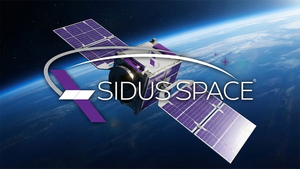How contracting public transit makes a difference for communities
(BPT) - At 7:32 a.m., Amanda pulls into the coffee shop near her office like she does every morning. She waves at the barista, snags her regular latte and hops back into the car, never thinking twice about the train rumbling by two blocks away. Amanda hasn't used public transit in years - not since college. But public transit has already shaped her entire morning, even if she's not aware of it.
The barista who made her coffee? He took the early bus from a neighborhood 45 minutes away. The mechanic who tuned up her car last week? She got to the shop on a light rail line that saved her nearly $200 a month in gas. The assistant in Amanda's office who makes her job easier? He takes a commuter van pool into town every day - no car, no problem.
Amanda may not realize it, but public transit is part of her everyday life. It connects many of the people she depends on - quietly, reliably and often invisibly.
Public transportation doesn't just move people. It moves economies, classrooms, hospitals and households. According to the American Public Transportation Association, nearly 87% of transit trips support local economic activity - getting people to work, school, medical appointments or essential services.
Even if you never board a bus or train yourself, transit touches your life through the many people who depend on it every day: The teacher who greets your child in the morning, the nurse in your hospital room, the server who refills your water and the electrician who wired your home. They all rely on public transit systems to show up, contribute and keep your world running.
Public transit is an invisible infrastructure of opportunity - especially for those without reliable access to a car. It's a lifeline for seniors, people with disabilities, students and working-class families. For every person like Amanda who's behind the wheel, there are dozens more whose journeys quietly intersect with hers through a bus route or subway line.

Partnerships that keep people moving
What helps public transportation agencies meet today's challenges to keep serving the needs of people in communities around the country? Partnerships between public transit agencies and organizations belonging to the North American Transit Alliance (NATA), which provides the experience and expertise to operate and staff innovative transportation solutions.
NATA's member organizations make up 15% of the U.S. public transportation workforce, encompassing over 71,000 employees in 46 states. NATA member organizations help public transportation improve service even in communities with massive transit demands, remaining flexible enough to respond to each region's unique needs and conditions.
Across the country, partnerships with private transit operators have resulted in better passenger service, a more efficient service with better value for taxpayers, and new innovations that directly benefit passengers, including:
- Restructuring bus routes for increased transit service frequency
- Launching smaller microtransit services to complement traditional transit service, resulting in faster, critical connections for residents.
- Introducing new technology such as contactless fare payment system and passenger mobile applications.
Partnerships inspire solutions
The many people who use and are touched by public transportation services nationwide (even if they're unaware of it) benefit from these partnerships with NATA member organizations. The increased efficiency and innovation achieved through public-private partnerships better serves the passengers who rely on them every day. Partnerships help transit companies get the most value for their budget dollars - while hiring trained local contractors for good-paying transit jobs that benefit entire communities.
The bus you didn't see
At 5:45 p.m., Amanda heads home. She hits some traffic, grumbles and turns up the radio. Meanwhile, just down the block, a man in a faded polo shirt waits at the bus stop. He just cleaned the office where Amanda works. She's never met him, but she notices the polished floors and tidy lobby every morning. Tomorrow, he'll be back - thanks to a bus that shows up right on time.
Whether we see it or not, public transit is always there - moving people, sustaining communities and quietly making our daily lives possible.
Learn more about public-private transportation solutions that help connect and strengthen communities at NATransitAlliance.org/contracting.
More News
View More




Recent Quotes
View MoreQuotes delayed at least 20 minutes.
By accessing this page, you agree to the Privacy Policy and Terms Of Service.